Louisa May Alcott: The Woman Behind Little Women Review

If you ever found yourself wondering what Louisa May Alcott was like, then look no further. The 2009 documentary Louisa May Alcott: The Woman Behind Little Women takes an in-depth look at Louisa’s life using only primary sources.
The film includes an incredibly researched script from writer Harriet Reisen (who also wrote the companion biography) and artistic direction from Director Nancy Porter.
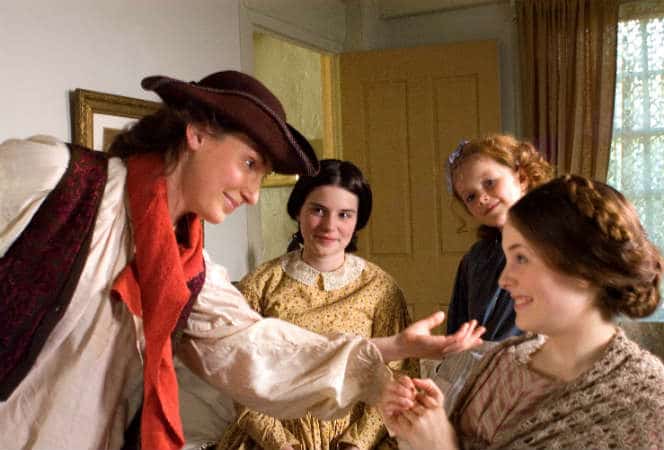
The film follows Louisa May Alcott’s life from her birth to her death in such a compelling, truthful way that by the end you feel like you know Louisa. AKA, the real-life Jo March.
THE CAST
Besides the fantastic script, the actors cast to reenact scenes from Louisa’s life fit into their roles perfectly.
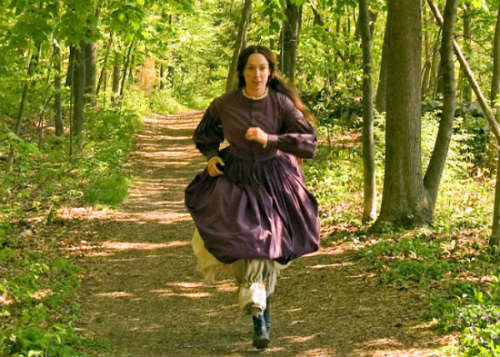
Elizabeth Marvel is the obvious standout as Louisa. She captures Louisa’s energy and passion, bringing the woman to life before our very eyes.
THE ALCOTT FAMILY
The documentary also opens the curtain to the poverty, hardship, depression, and anxiety, Louisa, herself experienced. If you thought the March family had it hard, it was nothing compared to what the Alcott family suffered.
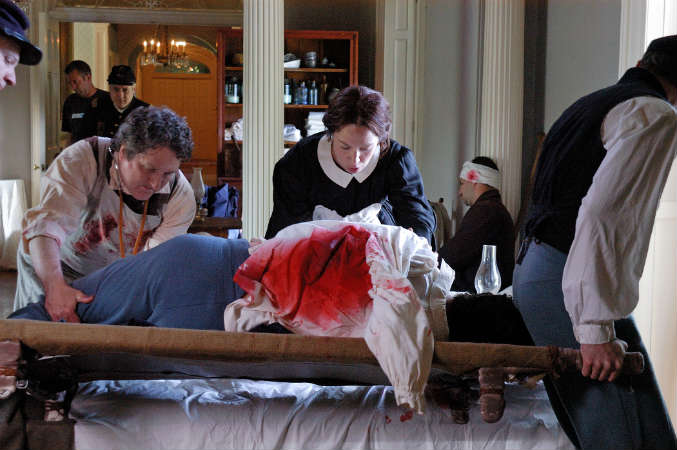
THE TRANSCENDENTALISTS
Even more intriguing was the relationships Louisa had with famous writers and thinkers of the time such as Ralph Waldo Emerson and Henry David Thoreau. Emerson was a literary mentor while Thoreau taught her and her sisters to appreciate nature. No doubt these men had an incredible influence on Louisa’s own writing as she grew.
A POSSIBLE ROMANCE
Particularly interesting is the “romance” Louisa arguably had with Ladislas Wisniewski (“Laddie”), a young Polish man Louisa traipsed through Paris with when she was 33. Using primary sources, the filmmakers and scholars make a convincing argument as to why there likely was some type of romance between them.
Not to mention, that Louisa, at least partially, used Laddie as an influence for the character of Laurie in Little Women.
OVERALL THOUGHTS
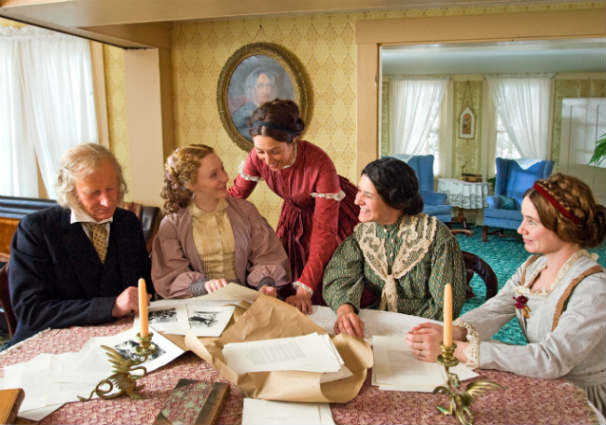
And I’m only scratching the surface of the trove of information available in this fascinating documentary. Besides the very reliable sources used to create the narrative, the film itself is artistic in style and plays out like a very entertaining period drama.
It makes you wonder why no one has actually ever made a dramatic film about Louisa May Alcott – a truly fascinating and talented woman.
In all, I can’t recommend this film enough. Anyone who loves Little Women, Louisa May Alcott, the history of literature or even the Concord Transcendentalist movement, should enjoy this brilliant documentary.
Where to Watch: You can buy Louisa May Alcott: The Woman Behind Little Women on DVD or rent/buy on Digital.

PIN THIS ARTICLE! AND MAKE SURE TO FOLLOW US ON PINTEREST.
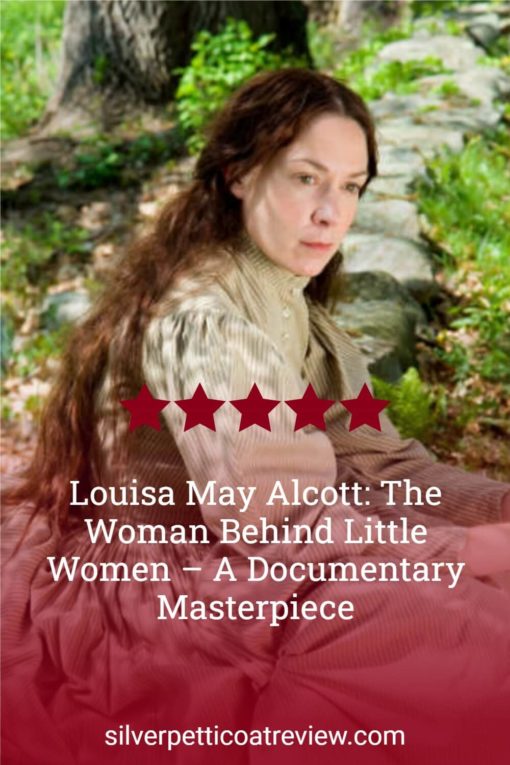

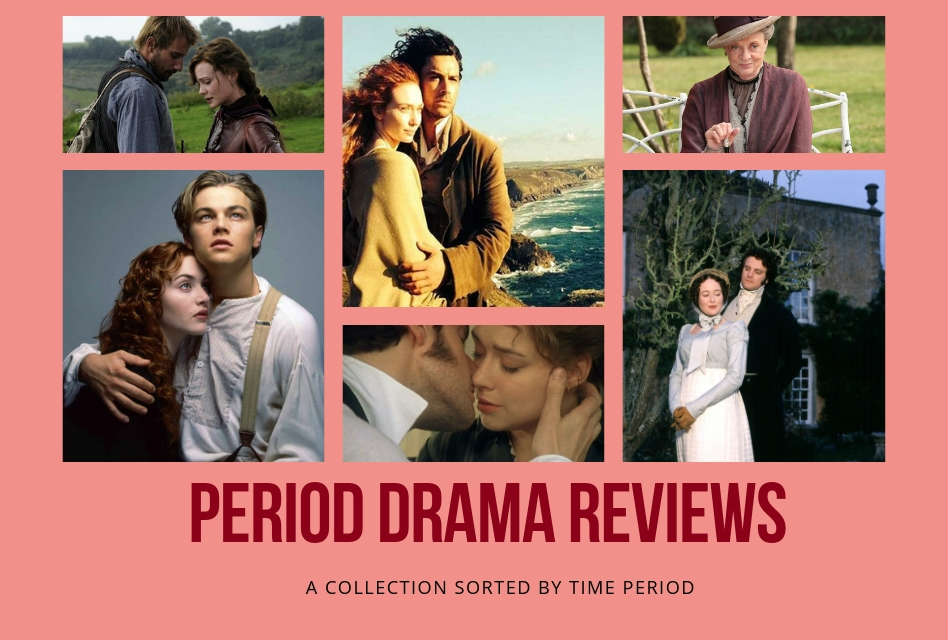
She wrote about never falling for a man but having fallen for many a beautiful woman. She adopted her friend’s child. Perhaps she was bisexual, but the evidence heavily suggests she was a lesbian. It’s tiring to see people straight-wash her. I’m sure this show is gorgeous but I’ve little interest in her supposed “romance” with a man when she quite clearly was never attracted to them.
It’s been a long time since I’ve watched the documentary, but I remember it being fabulous. That said, I’ve read her journals, letters, and well-researched biographies. While we can never know for sure, it does seem like she had feelings for Ladislas Wisniewski in her personal writings. But it’s hard to know for sure. It is certainly possible she was bisexual or a lesbian.
1. “She adopted her friend’s child.”
Is this a reference to Alcott looking after her sister’s daughter entrusted to her? See point 9 “Louisa May Alcott never had children, but she cared for her niece” of “10 Little Facts About Louisa May Alcott”.
2. On the other subject matter Iris raised.
Per “The Two Loves of Louisa May Alcott” of New England Historical Society, she had a crush on both Emerson and Thoreau:
“Louisa May’s crush on Thoreau competed with her interest in Emerson. Her family moved to a cottage next door to him. As a teenager, she often borrowed books from Emerson’s library and left wildflowers on his front step. He pretended he didn’t know where they came from.”
And the short-lived arguments for her being a lesbian have been superseded by the arguments of her being transgender, see NYT’s “Did the Mother of Young Adult Literature Identify as a Man?” of December 2022, from where a few salient excerpts follow below.
So while: ‘Louisa May Alcott balked when her editor asked her to write a book for girls. “Never liked girls or knew many,” she journaled, “except my sisters.”’ (Pertinent to this appears to be point 6 “Louisa May Alcott wrote Little Women to help her father” in “10 Little Facts About Louisa May Alcott” by way of explanation of why Little Women came about.)
And while there is:
‘Alcott did speak of having “fallen in love” in her life “with so many pretty girls and never once the least little bit with any man.”’
There is also:
‘Alcott also explored male homosexuality, cross-dressing and bisexuality in short stories like “My Mysterious Mademoiselle” and “Enigmas.” She was affectionate with many young men, particularly Alfie Whitman and Ladislas Wisniewski, who jointly inspired Laurie of “Little Women,” but scholars disagree on whether she regarded them as romantic interests.’
And then there is this:
‘“I long to be a man,” she wrote in one journal entry. “I was born with a boy’s nature,” she said in that letter to Whitman, and “a boy’s spirit” and “a boy’s wrath.” As a child, she didn’t “care much for girls’ things.” Recall that as an adult, just a few years from death, she saw herself as “a man’s soul, put by some freak of nature into a woman’s body.” Why not take Lou at his word?’
Thus that would make her a bisexual (or homosexual or straight) transgender male.
Per such arguments that she was in actual fact trans (merely before the term was coined), she’s then being lesbian-washed by arguments claiming her to be a woman and lesbian.
Accusations of washing seem to reasonably apply to multiple groups then, considering additional statements by Louisa (who preferred to be known as Lou etc) left out in Iris comment.